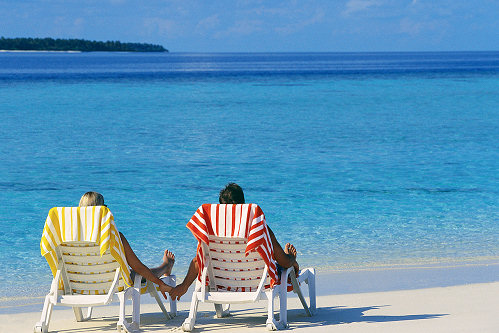AI
The girls from American Idol performed again today. I liked the same as usual, Mandisa, Kelly, Lisa, Paris. I actually dislike Brenna quite a bit, she is annoying.
| First Page Prev. Page Next Page Last Page | Page: 731/805 |
The girls from American Idol performed again today. I liked the same as usual, Mandisa, Kelly, Lisa, Paris. I actually dislike Brenna quite a bit, she is annoying.
A couple quick thoughts about the NY MTA:
- I imagine it's not easy optimizing such a big transportation system. However, some bus lines are obviously misallocated. For example the M4 runs on 34th way too frequently. You can often see 3,4 or even 5 buses go by in matter of a few minutes, all of them empty except for a couple people. On the other hand, during the same period of time, the M16 and M34 aren't frequent enough (you guessed it, those are the ones I want to take ![]() ) Seriously though, they are packed at all hours, while you see M4's go by constantly empty.
) Seriously though, they are packed at all hours, while you see M4's go by constantly empty.
- The way passengers get on and off the bus isn't particularly optimized. In Europe you mus exit the bus from the rear door. You can walk in quickly via a wider front door, and use one of several machines to scan your pass/id/ticket. Most surprisingly the MTA does not enforce the rule of leaving via the rear door, which causes inefficiencies since everybody has to wait to get on until all passengers get off. I understand it's related to the kneelilng mechanism on some buses, and some people having trouble with the steps, etc. Still, they should slowly replace them with better ones with a lower entry way, or a better full body kneeling system, and a wider entry way with multiple scanning machines.
Anyway, I am being very picky. Obviously, overall the MTA works pretty well, moving millions of people every day.

It's been pretty chilly lately, can't wait till Spring is here. Flying out to Cinci tomorrow morning. Coming back Sat morning. Haven't been there in a while, it will be good to catch up with friends and colleagues.
Pretty long day at work today, Mondays are always a bit rough. Lots of stuff going on.
Confirmed things with Bobby and Judit, we are definitely on for a getaway trip. It's happening next weekend actually. Should be a blast. Going to St. Croix. This is the largest of the United States Virgin Islands, 82 square miles in area. There are two distinct towns to visit: Christiansted and Frederiksted. The architectural quality and historic interest of the one-time Danish West Indies capital has made part of Christiansted (founded in 1734) a National Historic Site.
And for a bit of history:
Prior to, and less than a century after Columbus' discovery, St. Croix was inhabited by two tribes of Indians: the Caribs and the Arawaks. Around 1493, Columbus made his first visit to "Ayay" (as the Indians called St. Croix) and renamed it Santa Cruz (which is St. Croix.) His reception by the Caribs gives testament to their violent character, and a battle ensued. In response to such conflict, Charles V of Spain declared that all Indians in the islands were enemies and should be eliminated.
A constant state of war existed between the Caribs and the Spaniards for nearly a century. By 1596, the islands were described as being wholly uninhabited. St. Croix was not a major port for the Spanish -- San Juan, Puerto Rico was far more important. Due to Indian attacks, bad weather, and general poor luck, the Virgin Islands were unfortunately described as "the useless islands."
The Dutch and English are grouped together for they settled the Virgin Islands almost simultaneously -- sometime in the early 1600's. Each country settled a separate side of the island: the Dutch settled the east end and the English the west. Inevitably, conflict erupted, but the manner in which it did is interesting. According to the English: the English Governor Brainsby was murdered by the Dutch Governor Capoen, while visiting Capoen in his house. A newly appointed Dutch Governor tried to arbitrate with the English and was granted protection to travel to their side of the island. Immediately upon arrival, he was seized and shot. After numerous battles, the Dutch ended up abandoning the islands. The English controlled St. Croix until 1650. In that year the Spanish sent a fleet of 5 ships and 1,200 men to St. Croix from Puerto Rico and slaughtered everyone (ouch!) After only 15 years of domination, the English were ousted. The Dutch made one foolhardy attempt to recapture St. Croix. Assuming it to be abandoned, they sent two ships from St. Eustatius island. The two vessels dropped anchor right in front of Fort Frederik and proceeded to land. Unknown to the Dutch, the Spanish had left 60 men to guard the fort. The moment the landing boats reached shore, Spanish muskets killed all but ten men.
Later the same year, the French sent two vessels to capture St. Croix and succeeded. The Spanish rule of St. Croix was over almost as soon as it had begun. The French fared poorly during their first colonization attempt in 1651. Of 300 colonists, two thirds and two governors died of illness during the first year. Burning the local forest during the dry season was a common practice, supposedly to destroy what they suspected was the home of disease.
Ten years later the Governor of St. Kitts, De Poincy, bought St. Croix as his private estate and later deeded it to the Knights of Malta. The Knight of Malta were not true knights in the medieval sense but were a religious group also known as the Order of St. John of Jerusalem. The Order fared poorly and in general were considered to be rich young aristocrats who knew little about colonization. In 1665, the French West Indian company bought the island from the Knights. At last, St. Croix had proper management under its new Governor DuBois and flourished. In short time the island had 90 plantations. Crops included tobacco, cotton, sugar cane and indigo. After DuBois´ death, bad administration, drought and sickness ended what advances had been made. From 1695 to 1733, St. Croix was considered abandoned.
In 1733, the French Government sold St. Croix to the Danish West India & Guinea Co. for approximately $150,000. Shortly after this transaction, the Danes made a clever move by allowing immigrants of other nationalities to move in. The result was rapid development as everyone from the Spanish Sephardic Jews to the Huguenots purchased the available plantations. The English soon dominated the populations and English became the language spoken on the streets. It was under Danish rule that the sugar plantations flourished. On St. Croix, for over two centuries, sugar was king! To this day, the sugar plantations scattered around the island are visible. Sugar was destined to success -- the markets in Europe were huge, and sugar cane could only be grown in tropical zones.
One invention, however, made the sale of cane sugar in Europe an impossibility. Between 1820 and 1840, the sugar beet became a feasible source of manufacturing sugar throughout Europe. Since the sugar beet could be grown in Europe, it made no sense to send ships across the Atlantic for a product that could cheaply be produced in Europe's native soil. The impact of this new source of sugar was catastrophic to the local economy. Its result can be seen in the history of the slaves on the island. Though the slaves were freed in 1848, the economic condition on the island was so bad that the former slaves rioted, resulting in the Fireburn of 1878 (In which the slaves rioted and burned much of Frederiksted and many plantations around the island.)
The last sugar harvest took place in 1966. St. Croix's economy then turned to the newly built oil refinery (Amerada Hess) and the alumina plant (VIALCO). Since then, the economy has become more and more dependent upon tourism as a revenue source.
Denmark sold the Virgin Islands to the United States of America in 1917 for $25 million. St. Croix is now a U.S. Territory, along with the other U.S. Virgin Islands, St. Thomas and St. John. The island´s residents are U.S. citizens.

It's about 17 F outside, like -8 C. Cold.
| First Page Prev. Page Next Page Last Page | Page: 731/805 |